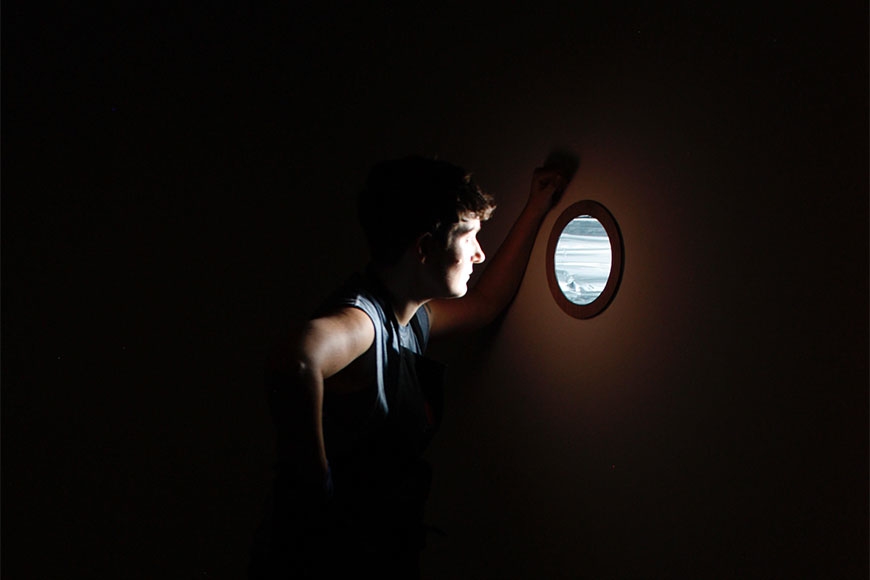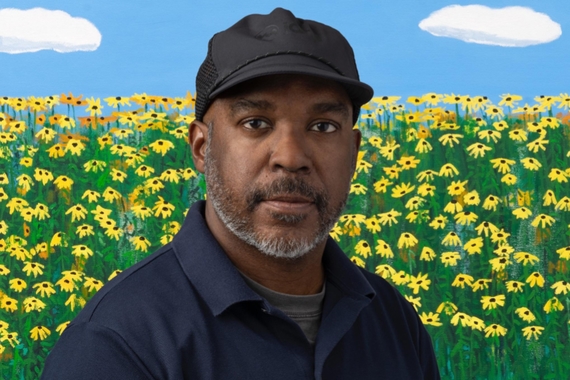Cross-Species Connection Through Art
No matter where she was, Corinne Teed was always carrying a sketchbook. After receiving a BA in Development Studies from Brown University, Teed became a community organizer. During this time, she began printmaking; one of her first prints was an anti-war poster that she and her friends wheat-pasted around town in the middle of the night.
After transitioning to being an artist and starting an MFA program at the University of Iowa, she continued printmaking. Now, Teed uses her experience in social justice to create participatory art. Participatory art includes the public as collaborators in a piece, so Teed interviews people and features their stories and words in her work, incorporating community voices into multimedia projects.
Using Emotions to Understand Climate Change
Teed has always been curious about how humans relate to other species. “We can learn a lot from animals because we’re connected to them,” she says. Though Western societies see the world as very human-centric, Teed sees humans as members of ecosystems. “How we relate to other species… feels like a really important and contentious issue in this moment of climate change and habitat destruction.”
In her work, Teed focuses on the affective. She considers how humans relate to ecology, concentrating on the ways we understand and communicate the emotional and relational. Scientific reasoning dominates the conversation around climate change, and she believes the discourse needs to shift to an emotional and relational perspective. Looking at climate change through an emotional lens enables people to better recognize their connection with the natural world.
“I feel a great sense of loss in how troubled our own human identity is in relation to other species,” says Teed. In capitalist economies, consumption and production are paramount, and people “are taught how to get use out of things, not how to relate to things,” she says. Teed wants to have conversations about climate change that acknowledge the decline of other species and what that means for humans. Understanding and empathizing with species that cannot stand up for themselves allows humans to consider the consequences of the climate crisis on a deeper level.
The Human Connection to Ecology
Feral Utopias is an animation with a voiceover that was one of Teed’s earlier works. It specifically explores queer humans’ relationships with other species. For the piece, she interviewed people who identify as queer and asked them to think of a species of animal that provided a sense of home to them. They then discussed what that particular species meant to them and how they perceived their relationship.
Many of the subjects talked about how they grapple with feelings of alienation and how their chosen species provided a sense of comfort. The feelings of estrangement they described often guided the subject’s choice of species, as they recognized ethics of care and community between members of their chosen species and found they identified with aspects of the species’ behavior.
After recording the interview, Teed asked the interviewees to perform gestures in front of the camera, responding to prompts based on their relationship to their chosen species. The camera would take about six photos per second so that when they were played back, the movements were discontinuous. All of this was done in front of a green screen so that Teed could easily isolate the figures and incorporate backgrounds of landscapes. The landscapes were made of high resolution scans of wood engravings from the 1800s created by naturalists documenting US landscapes. The strange movements in the work make the piece “feel otherworldly,” says Teed. When they are displayed, they’re projected onto a wall, and viewers feel like they are walking in a dream world.
Continuing the Conversation
Teed hopes her work will strengthen the conversations about climate change. “I have a great reverence towards our co-inhabitants on this earth,” she says. She sees other species as peers and colleagues. “We’re interdependent with them in so many ways.”
Teed’s affective approach to climate change allows people to look at the destruction of land and the declining health of other species through an emotional lens. Her art functions to connect people to their environments and encourages everyone to consider the ramifications of their actions. Her pieces also urge people to consider themselves as a member of an ecosystem. Ultimately, Teed wants people to understand that humans and other species are not so different; in fact, we are all part of a whole.
This story was written by an undergraduate student in Backpack. Meet the team.



